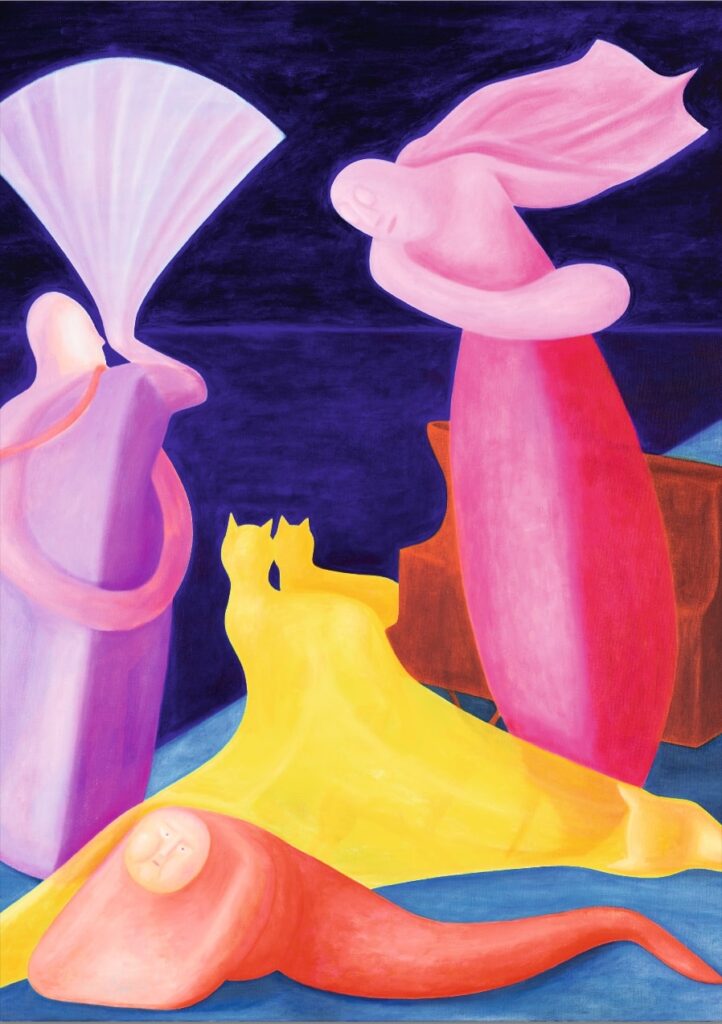Share this
Located on Brunnenstrasse 25B in Berlin, Germany, top-tier contemporary art gallery, BETTER GO SOUTH, will be presenting “History Reloaded“, on June 22. A duo show, starring resident artist, Filippo Cegani, from Milan. You can check out our in-depth interview with him HERE. He currently lives and works in London, but has spent the last two months painting on location in Berlin, where he created a super touching series of canvas works.
The second artist is “JURIT“. He comes from Leipzig and is very well connected to the scene around Neo Rauch. His latest paintings have already been hyped by renowned art influencers, and rightly so: JURIT has reinterpreted and staged epochal works, e.g. by Rubens. Live and in colour, the works are simply awesome.
To better understand, the artists latest paintings, let’s start with Filippos, which takes an intimate look at religious statues. This series follows the rediscovery of Christ- ianity and Christian iconography by the artist in the most recent year. The main focus of this series of painting, is the facial expression of these statues, said statues become not only a vehicle of religious believes, but mainly a glossy caricature of pain.
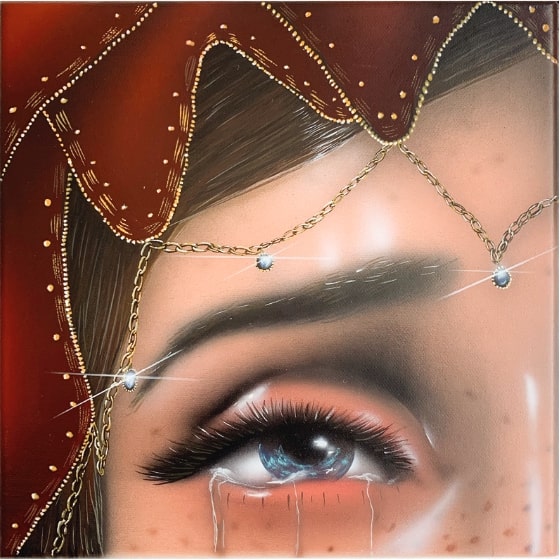

The kitschy overtones and strong highlights of the paintings almost contrast with the obvious depiction of pain represented within this painted window. The pain represented by said figures is static, non existent, a crystalli-sations of pain, even in the absence of pain itself. The reality of the physical experience of pain, is filtered by the material of the statue, making them a metaphor of the ex-perience, without the experience in itself.
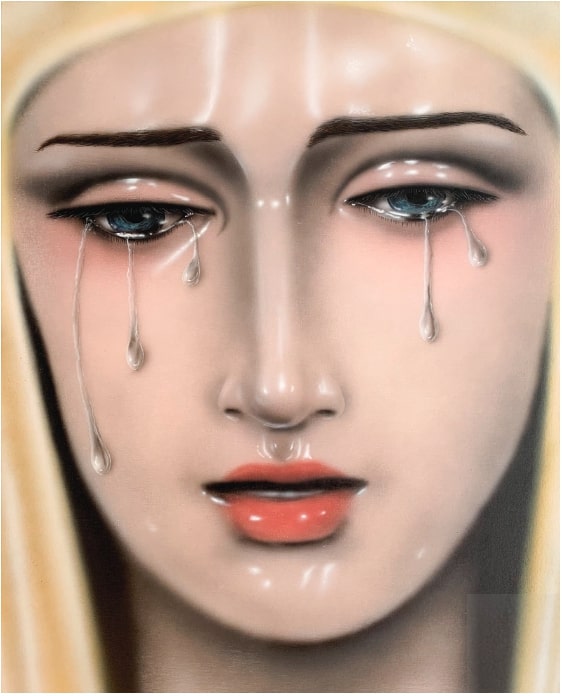

The distance placed by respect to said religious figures, becomes a representation of the distance we do have to each other’s pain, it is understood and seen, yet it is empty and distant, a plastic souvenir of what we unfortunately experience ourselves.
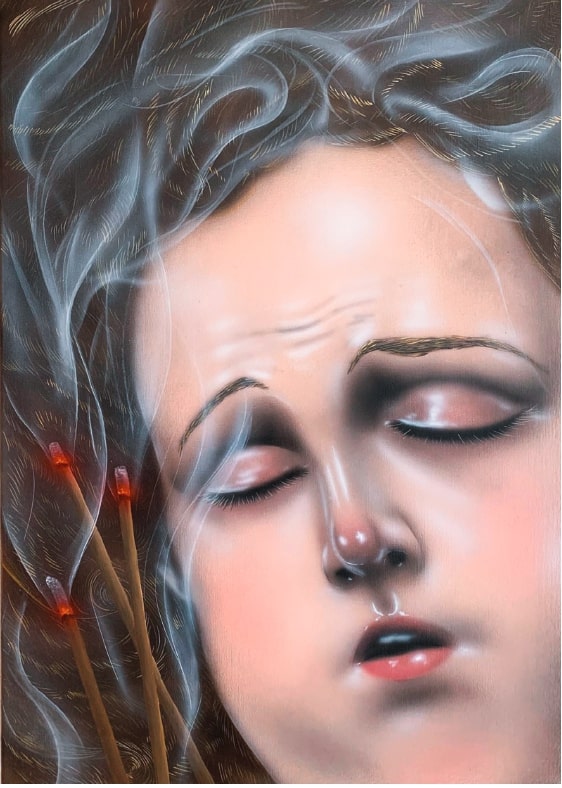

JURIT, rediscovers the old masters.
Quotations from famous works of art history appeared in JURIT‘s first pictures – the land- scape in the background of the „Mona Lisa“, or a naked boy on a swing, mirrored from Lucas Cranach‘s painting “Melancholy”. But then he went one step further, and instead of referring directly to role models, JURIT began to alienate them so much, that they can only be guessed at. In the titles, however, he gives hints, since the paintings are called “entanglamento (rubens)” or “triumph – drinking as a solution (titian)”.
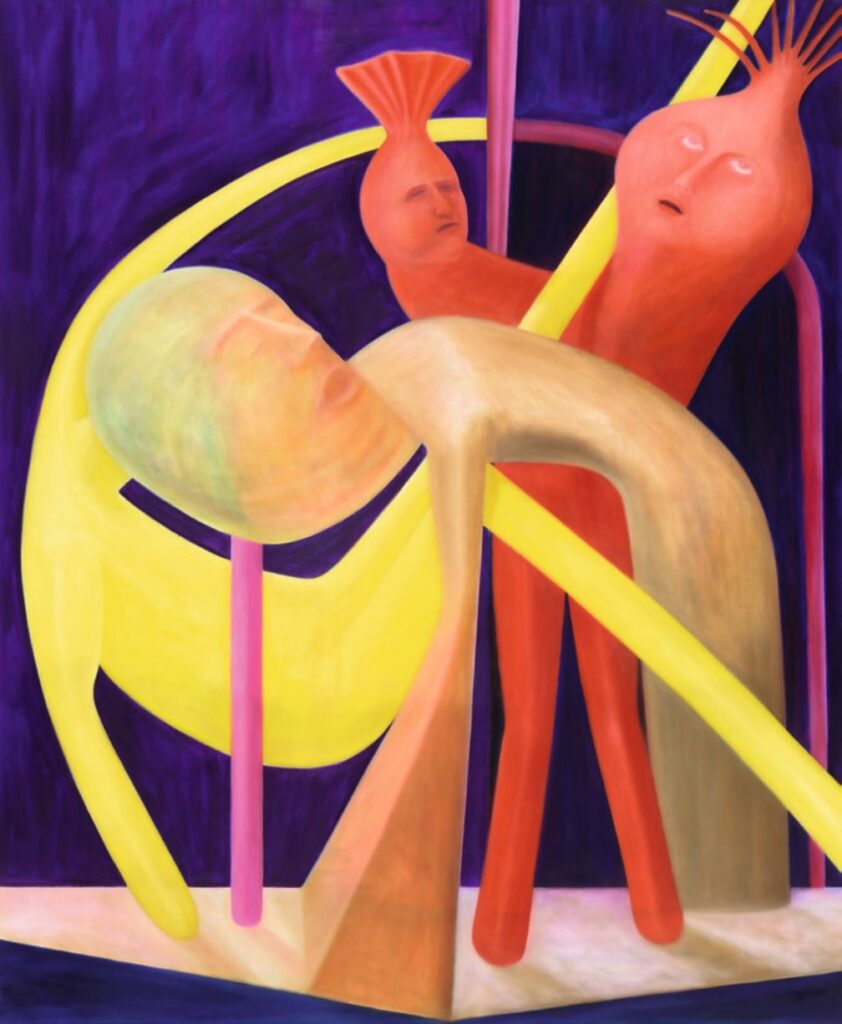

Although the Old Masters that JURIT takes on, are among the most frequently edited artists, i.e. not just copied, but varied, parodied and trans- formed again and again, they are unlikely to have been changed more radically. On the one hand, JURIT abstracts, so that figures transform into shapes, illusionistic pictorial spaces become two-dimensional and mixed tones turn into unmixed colors, but on the other hand he symbolically reduces the original pictorial statements and at the same time transfers them to the age of emojis. Thus, in his version of an Entombment pain- ted by Titian, Jesus has a large lemon-yellow head with two circles for eyes and a down- ward-curving bracket for a mouth. Maria and Johannes are no longer recognizable as two separate bodies, but as the smallest units of the entire painting there are two drops, one placed next to a circle, one on the side of a quarter circle – these are the tears of the two mourners, just falling from their face falling to the ground. The picture title and especially a look at the model help to un- derstand JURIT‘s painting. But what if you just look at his pictures? Instead of looking at them analytically to understand the subject and the metamorphoses from the original paintings, you then let them sink in in their entirety. You will follow the curves of individual forms, some of which run almost through the entire picture, perhaps changing direction in a surprising way and sometimes even appearing to gradually transform from an organic to an inorganic substance.
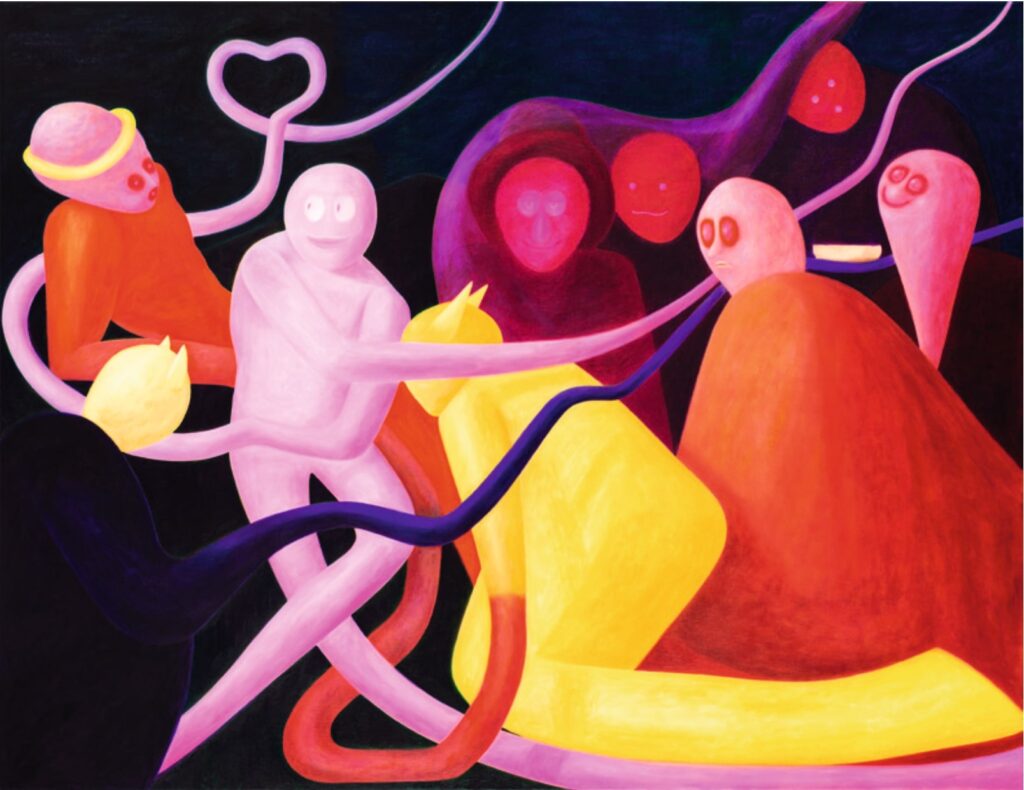

And you can feel that every-thing in JURIT‘s pictures flows into one another; each ele- ment appears connected to others, touches, merges, is intertwined. It‘s a big hug. As much as JURIT abstracts in his painting on the one hand and thus creates distance, on the other hand he works on the imagination of tactile experiences. Or does one not feel involved in an event when looking at his pictures? Ho- wever, this is not as concrete as, for example, with the Laocoön group, but much more ge- neral, more like in a dream, in which each ele- ment can be different at any time. And so his pictures also offer more than just the topicmentioned in the title. If you look at the mo- dels again, it is more as if JURIT‘s paintings are in a different state of aggregation than they are, in a different dimension: as if the ar- tist had discovered a previously secret access to the machine room of art.
JURIT’s text is written by: Wolfgang Ullrich
